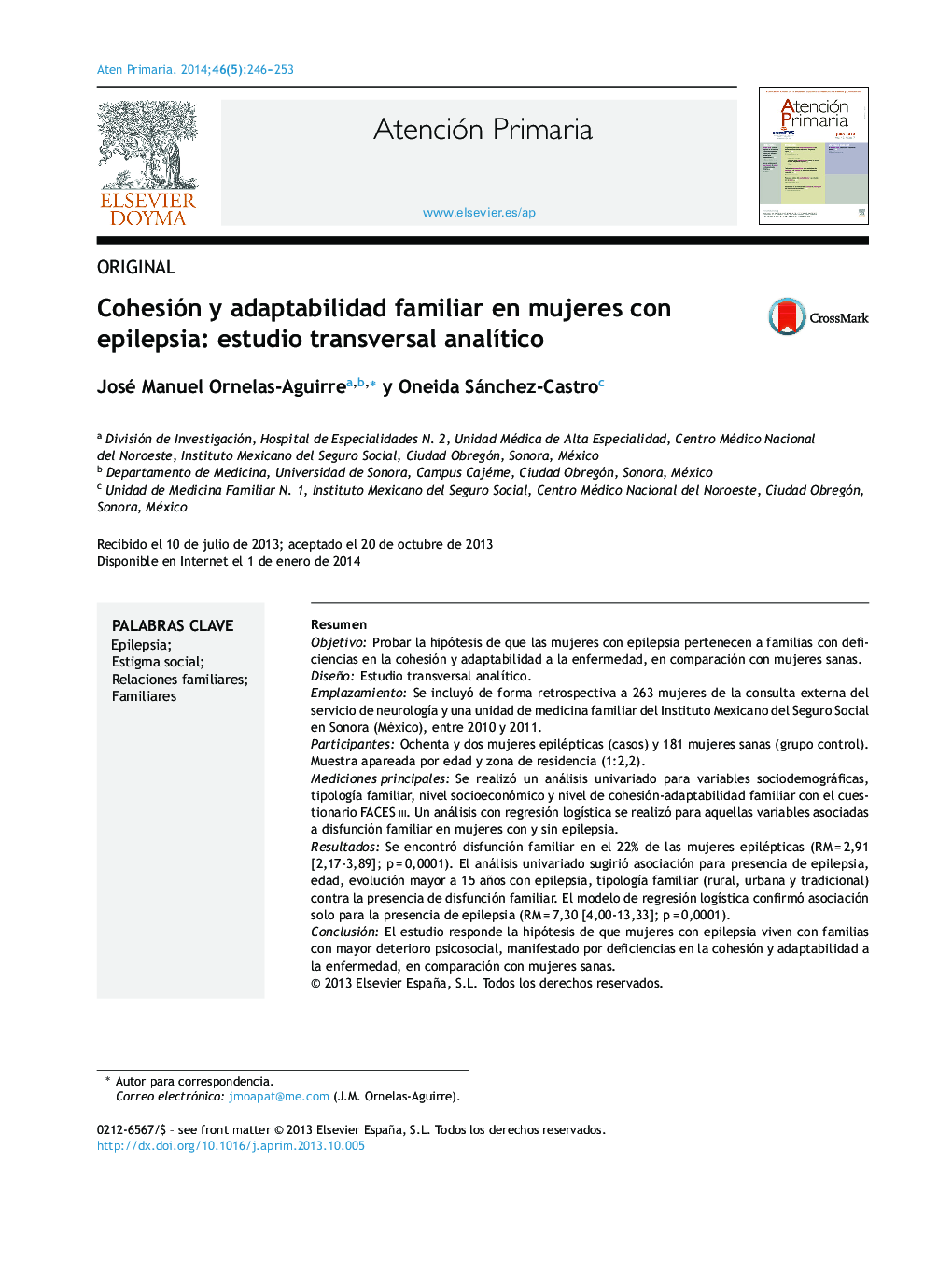| کد مقاله | کد نشریه | سال انتشار | مقاله انگلیسی | نسخه تمام متن |
|---|---|---|---|---|
| 3457756 | 1230930 | 2014 | 8 صفحه PDF | دانلود رایگان |
ResumenObjetivoProbar la hipótesis de que las mujeres con epilepsia pertenecen a familias con deficiencias en la cohesión y adaptabilidad a la enfermedad, en comparación con mujeres sanas.DiseñoEstudio transversal analítico.EmplazamientoSe incluyó de forma retrospectiva a 263 mujeres de la consulta externa del servicio de neurología y una unidad de medicina familiar del Instituto Mexicano del Seguro Social en Sonora (México), entre 2010 y 2011.ParticipantesOchenta y dos mujeres epilépticas (casos) y 181 mujeres sanas (grupo control). Muestra apareada por edad y zona de residencia (1:2,2).Mediciones principalesSe realizó un análisis univariado para variables sociodemográficas, tipología familiar, nivel socioeconómico y nivel de cohesión-adaptabilidad familiar con el cuestionario FACES III. Un análisis con regresión logística se realizó para aquellas variables asociadas a disfunción familiar en mujeres con y sin epilepsia.ResultadosSe encontró disfunción familiar en el 22% de las mujeres epilépticas (RM = 2,91 [2,17-3,89]; p = 0,0001). El análisis univariado sugirió asociación para presencia de epilepsia, edad, evolución mayor a 15 años con epilepsia, tipología familiar (rural, urbana y tradicional) contra la presencia de disfunción familiar. El modelo de regresión logística confirmó asociación solo para la presencia de epilepsia (RM = 7,30 [4,00-13,33]; p = 0,0001).ConclusiónEl estudio responde la hipótesis de que mujeres con epilepsia viven con familias con mayor deterioro psicosocial, manifestado por deficiencias en la cohesión y adaptabilidad a la enfermedad, en comparación con mujeres sanas.
Objective To test the hypothesis that women with epilepsy come from families with poor cohesion and adaptability to the disease, compared with healthy women.Design Cross-sectional study.Setting A retrospective study was done on 263 women from a neurology outpatient department and a family medicine unit from the Mexican Social Security Institute in Sonora (Mexico) between 2010 and 2011.Participants Were 82 women with epilepsy (cases), and 181 healthy women (control group). Age and area of residence was utilized to pair the sample (1:2,2).Measurements Univariate analysis was performed for socio-demographic variables, family type, socio-economic status, level of cohesion and family adaptability based on FACES III. A logistic regression analysis was performed for those variables that were associated with functionality of family in women with and without epilepsy.Results A family dysfunction were found in 22% of epileptic women (OR = 2.91 [2.17, 3.89], p=.0001). Univariate analysis suggested the presence of epilepsy and of family dysfunction associated with age, disease more than 15 years of evolution, and family type (rural, urban and traditional). The logistic regression model confirmed an association only for presence of epilepsy (OR = 7.30 [4.00, 13.33], p=.0001).Conclusion The study answers the hypothesis that women with epilepsy live in families with greater psychosocial impairment, manifested by deficiencies in cohesion and adaptability to the disease, compared with healthy women.
Journal: Atención Primaria - Volume 46, Issue 5, May 2014, Pages 246–253
